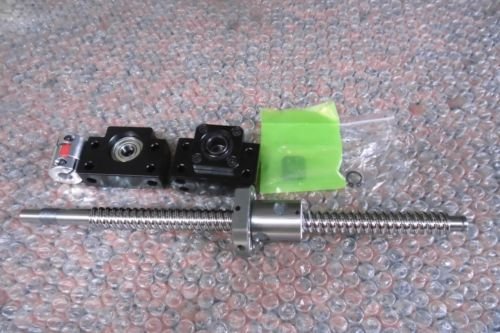By comparison, the Z Axis is much more straightforward than the X Axis.
I purchased a 600mm long 12mm diameter rolled ballscrew from China on Ebay (Img 1). This included bearings as well as a flexible coupling. There was a bit of a drama with one of the bearings the wrong size, but they promised to send me another one, and I don't need it for a few weeks anyway. Replacement bearing arrived a couple of weeks later.
I used one of the existing tapped holes to locate the right hand fixed bearing. Other holes will be tapped later.
I used a ground parallel as a spacer and made the gap the same at both ends and then drilled a clearance hole to allow a nut on the other side (Img 2). I made this a little large and nipped it up and tapped the bearing into the exact position. The other holes were then drilled and tapped. All bearings house M6 socket head cap screws onto the lathe bed.
The motor mount was milled to fit the NEMA 24 Stepper Motor .
Due to some work commitments, it took me a couple of months to get to the next stage!
IMG 4 shows the Z axis stepper mounted to the bed, and IMG 5 shows the ball nut mount attached to the carriage.
First video shows first movement of the Z axis with the TB6560 controller!
I ended up replacing this with a Gecko controller, more details elsewhere.
I set the steps per unit in Mach3 (new Gecko G540 controller) using the Mill screenset as there is a routine under configuration that automatically calculates steps per unit. Then I setup a dial indicator to check movement and backlash. IMG 7 shows where a G0 Z15 goes, spot on!!!. IMG 8 shows where a G0 Z0 goes, no backlash at all!!!
Second video is movement with the Gecko G540, much faster and smoother! This is jogging at 2000mm/minute.





